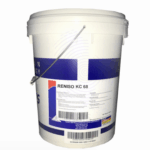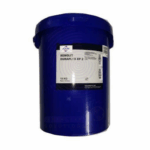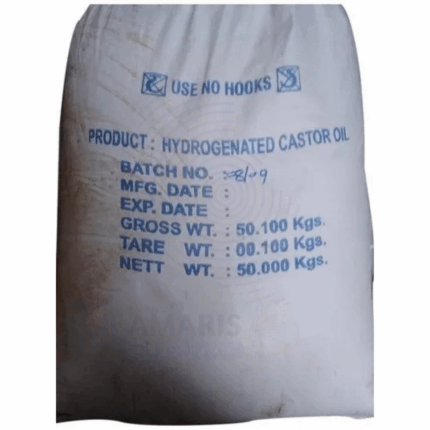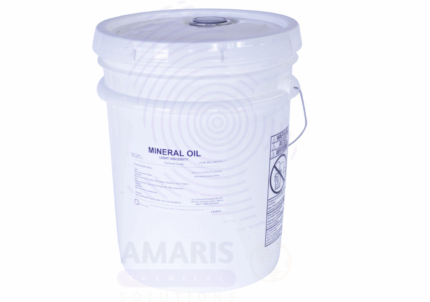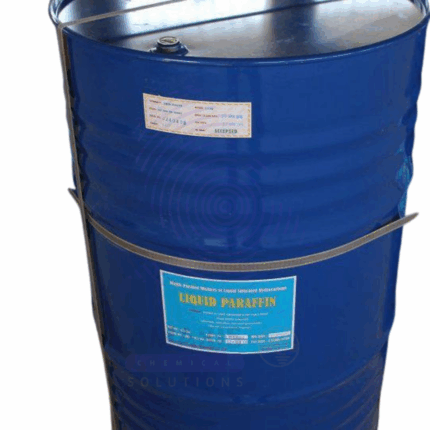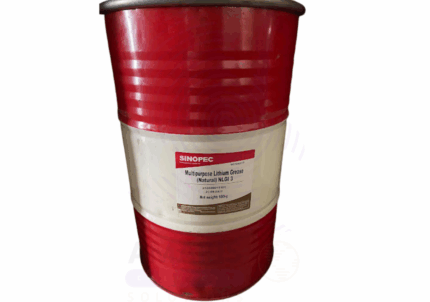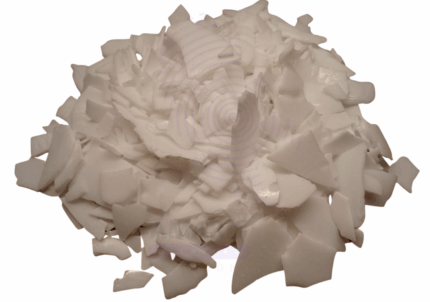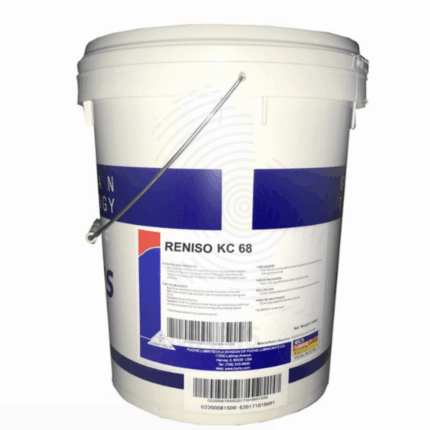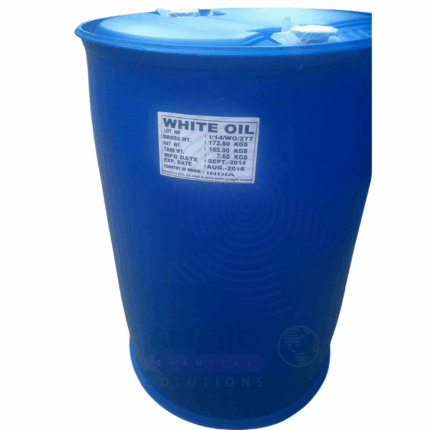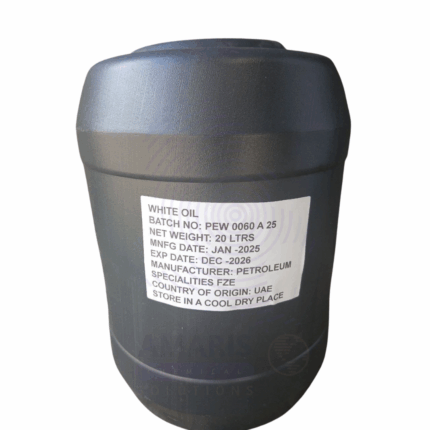Renolin B
Whatsapp Order
Renolin B is a high-quality mineral oil-based lubricant commonly used as a hydraulic oil, compressor oil, and general-purpose industrial lubricant. It features excellent oxidation stability, good thermal properties, and effective anti-wear performance. Renolin B is suitable for a wide range of industrial machinery and equipment, providing reliable lubrication, corrosion protection, and extended service life under moderate operating conditions
Category: Lubricants
Tags: Base Oil Blend, Hydraulic Oil, Industrial Lubricating Oil, Multipurpose Hydraulic Fluid, Renolin B
Description
Table of Contents
Toggle
Renolin B
Primary Uses
- Hydraulic Systems
- Used as a hydraulic fluid in industrial machinery, mobile equipment, and automotive systems.
- Provides efficient power transmission with good viscosity stability and low foaming.
- Protects system components from wear, corrosion, and oxidation.
- Compressor Lubrication
- Applied as a lubricant in rotary and reciprocating air compressors.
- Ensures smooth operation and extends compressor service intervals.
- Gear and Bearing Lubrication
- Used in gears, bearings, and circulating oil systems in various industrial applications.
- Reduces friction and prevents metal-to-metal contact under moderate load conditions.
- General Industrial Lubrication
- Serves as a base oil for manufacturing specialty lubricants and greases.
- Used for lubrication of pumps, valves, and other moving mechanical parts.
Secondary Uses
- Metalworking Fluids
- Can be blended into metalworking oils for machining and cutting operations.
- Heat Transfer Fluids
- Occasionally used in low-to-medium temperature heat transfer applications.
- Textile and Paper Industries
- Used for lubrication of machinery components in textile and paper manufacturing.
KEY PRODUCT FEATURES
1. Basic Identification Attributes
- Chemical Name (IUPAC): Mineral oil (mixture of hydrocarbons)
- Common/Trade Name: Renolin B
- CAS Number: 8042-47-5 (typical for mineral oil)
- HS Code: 2710.19.20
- Synonyms: Industrial mineral oil; lubricating oil base stock
2. Physical & Chemical Properties
- Physical State: Liquid
- Color & Odor: Clear to pale yellow; mild hydrocarbon odor
- Viscosity: Varies by grade; typically ISO VG 32–100
- Flash Point: Approx. 180–220°C (depends on specific grade)
- Pour Point: Typically below -10°C
- Density: Approx. 0.85–0.90 g/cm³ at 15°C
- Solubility: Insoluble in water; soluble in organic solvents
3. Safety & Hazard Attributes
- GHS Classification: Not classified as hazardous; combustible liquid
- Toxicity: Low toxicity; avoid prolonged skin contact
- Exposure Limits: Follow occupational exposure guidelines for mineral oils
4. Storage & Handling Attributes
- Storage Conditions: Store in tightly closed containers in a cool, dry, well-ventilated area away from ignition sources
- Container Type: Steel drums, bulk tanks, or sealed containers
- Shelf Life: Typically 3–5 years if stored properly
- Handling Precautions: Use gloves and eye protection; avoid inhalation of vapors and prolonged skin contact
5. Regulatory & Compliance Attributes
- Complies with industrial lubricant standards (e.g., DIN, ISO)
- Meets regulatory requirements for mineral oil-based lubricants in various jurisdictions
- Free of heavy metals and harmful additives in standard grades
6. Environmental & Health Impact
- Biodegradability: Slowly biodegradable depending on formulation
- Ecotoxicity: Potentially toxic to aquatic organisms in high concentrations
- Bioaccumulation: Low potential
- Waste Disposal: Dispose of according to local environmental regulations
SAFETY HANDLING PRECAUTIONS
Safety Handling Precautions
- PPE Required: Gloves, goggles, and protective clothing recommended
- Handling Guidelines: Avoid skin contact; use in well-ventilated areas
- Storage Measures: Keep containers tightly closed and stored in a dry environment away from ignition sources
First Aid Measures
- Inhalation: Move to fresh air; seek medical attention if respiratory irritation occurs
- Skin Contact: Wash thoroughly with soap and water; seek medical advice if irritation develops
- Eye Contact: Rinse immediately with water for at least 15 minutes; get medical attention if irritation persists
- Ingestion: Do not induce vomiting; seek medical help immediately
Firefighting Measures
- Fire Hazards: Combustible liquid; can form flammable vapors
- Extinguishing Media: Foam, dry chemical, CO₂, or water spray
- Special Precautions: Use full protective gear and self-contained breathing apparatus if involved in fire
- Hazardous Combustion Products: Carbon oxides, hydrocarbons, and possibly sulfur oxides
Related products
Hydrogenated Castor Oil
Hydrogenated Castor Oil, also known as castor wax, is a hard, brittle, and high-melting-point wax derived by the hydrogenation of pure castor oil. This white to off-white, odorless substance is non-toxic and insoluble in water but dispersible in surfactant systems. Its primary component is hydrogenated ricinoleic acid triglyceride, and it is prized for its excellent lubricating, emulsifying, thickening, and consistency-enhancing properties.
Due to its stability, non-reactivity, and film-forming capability, Hydrogenated Castor Oil is widely used in cosmetics, personal care, pharmaceuticals, industrial lubricants, coatings, plastics, and more. It improves product texture, enhances emulsion stability, and provides moisture retention in skincare applications.
Light White Mineral Oil Tech Grade
Light White Mineral Oil Tech Grade is a highly refined, colorless, odorless, and tasteless petroleum-derived oil. It is characterized by its low viscosity and excellent lubricating properties. This technical-grade mineral oil undergoes stringent purification processes to remove impurities, making it suitable for various industrial, cosmetic, pharmaceutical, and food-related applications. Its chemical stability, non-reactivity, and safety profile make it a versatile ingredient and lubricant in many manufacturing and processing sectors.
Liquid Paraffin
Liquid Paraffin, also known as mineral oil, is a clear, colorless, odorless, and tasteless petroleum-derived liquid hydrocarbon. It is composed primarily of saturated hydrocarbons and is highly refined to meet pharmaceutical and cosmetic grade standards. Liquid Paraffin is widely used for its lubricating, moisturizing, and protective properties. It is non-volatile, chemically stable, and insoluble in water, making it ideal for applications in personal care, pharmaceuticals, and industrial lubrication.
Lithium Grease
Lithium Grease is a multi-purpose, high-performance lubricant made by thickening mineral or synthetic oils with lithium soap as the thickening agent. It exhibits excellent mechanical stability, water resistance, and oxidation resistance, making it suitable for a wide range of industrial, automotive, and household lubrication applications. Lithium Grease is valued for its high dropping point, good adhesion, and ability to perform under varying temperature and load conditions.
Polyvinyl Chloride PE Wax
Polyvinyl Chloride PE Wax is a polyethylene-based wax additive used in PVC formulations to improve processing, lubrication, and surface finish. It serves as an internal and external lubricant in both rigid and flexible PVC products, enhancing extrusion, molding, and calendaring operations. It also contributes to better dispersion of fillers and pigments, reduced friction, and improved thermal stability. PE Wax for PVC is available in powder, flake, or granule form and is valued for its compatibility, thermal resistance, and cost-effectiveness.
Renisco KCS 68
Renisco KCS 68 is a clay-coated, controlled-release potassium sulfate fertilizer granule containing approximately 68% K₂O equivalent. The clay coating regulates potassium release, aligning nutrient availability with plant uptake over an extended period. This minimizes leaching and enhances nutrient-use efficiency. Renisco KCS 68 is widely used in horticulture, agriculture, turf management, and specialty crop production.
White Oil
White Oil, also known as Mineral Oil or Liquid Paraffin, is a highly refined, clear, odorless, and tasteless petroleum-derived oil. It is composed of saturated aliphatic hydrocarbons and is available in various viscosity grades depending on the intended application. The product is extensively purified to remove aromatic hydrocarbons, sulfur compounds, and other impurities, making it suitable for use in personal care, pharmaceutical, food, and industrial applications. White Oil is prized for its excellent lubricity, moisture barrier function, chemical stability, and non-comedogenic properties.
White Oil supplied in a 162 kg drum format is typically used in bulk manufacturing and industrial-scale processing across multiple sectors.
Zinc Stearate
Zinc Stearate is a fine, white powder composed of zinc salts of stearic acid. It is a hydrophobic, non-toxic metal soap widely used as a lubricant, release agent, and stabilizer in plastics, rubber, paints, coatings, and personal care industries. Known for its excellent mold-release properties and compatibility with a range of polymers, Zinc Stearate offers thermal stability and processing efficiency across industrial applications.


 Preservatives(food)
Preservatives(food) Flavor Enhancers
Flavor Enhancers Acidulants
Acidulants Sweeteners
Sweeteners Antioxidants
Antioxidants Colorants(food)
Colorants(food) Nutraceutical Ingredients (food)
Nutraceutical Ingredients (food) Nutrient Supplements
Nutrient Supplements Emulsifiers
Emulsifiers
 Collectors
Collectors Dust Suppressants
Dust Suppressants Explosives and Blasting Agents
Explosives and Blasting Agents Flocculants and Coagulants
Flocculants and Coagulants Frothers
Frothers Leaching Agents
Leaching Agents pH Modifiers
pH Modifiers Precious Metal Extraction Agents
Precious Metal Extraction Agents
 Antioxidants(plastic)
Antioxidants(plastic) Colorants (Pigments, Dyes)
Colorants (Pigments, Dyes) Fillers and Reinforcements
Fillers and Reinforcements Flame Retardants
Flame Retardants Monomers
Monomers Plasticizers
Plasticizers Polymerization Initiators
Polymerization Initiators Stabilizers (UV, Heat)
Stabilizers (UV, Heat)
 Antifoaming Agents
Antifoaming Agents Chelating Agents
Chelating Agents Coagulants and Flocculants
Coagulants and Flocculants Corrosion Inhibitors
Corrosion Inhibitors Disinfectants and Biocides
Disinfectants and Biocides Oxidizing Agents
Oxidizing Agents pH Adjusters
pH Adjusters Scale Inhibitors( water)
Scale Inhibitors( water)
 Antioxidants(cosmetic)
Antioxidants(cosmetic) Emollients
Emollients Fragrances and Essential Oils
Fragrances and Essential Oils Humectants
Humectants Preservatives
Preservatives Surfactants(cosmetic)
Surfactants(cosmetic) Thickeners
Thickeners UV Filters
UV Filters
 Fertilizers
Fertilizers Soil Conditioners
Soil Conditioners Plant Growth Regulators
Plant Growth Regulators Animal Feed Additives
Animal Feed Additives Biostimulants
Biostimulants Pesticides (Herbicides, Insecticides, Fungicides)
Pesticides (Herbicides, Insecticides, Fungicides)
 Active Pharmaceutical Ingredients (APIs)
Active Pharmaceutical Ingredients (APIs) Excipients
Excipients Solvents(pharmaceutical)
Solvents(pharmaceutical) Antibiotics
Antibiotics Antiseptics and Disinfectants
Antiseptics and Disinfectants Vaccine Adjuvants
Vaccine Adjuvants Nutraceutical Ingredients (pharmaceutical)
Nutraceutical Ingredients (pharmaceutical) Analgesics & Antipyretics
Analgesics & Antipyretics
 Analytical Reagents
Analytical Reagents Solvents(lab)
Solvents(lab) Chromatography Chemicals
Chromatography Chemicals Spectroscopy Reagents
Spectroscopy Reagents microbiology-and-cell-culture-reagents
microbiology-and-cell-culture-reagents Molecular Biology Reagents
Molecular Biology Reagents Biochemical Reagents
Biochemical Reagents Inorganic and Organic Standards
Inorganic and Organic Standards Laboratory Safety Chemicals
Laboratory Safety Chemicals Specialty Laboratory Chemicals(Special Laboratory Equipment)
Specialty Laboratory Chemicals(Special Laboratory Equipment)
 Demulsifiers
Demulsifiers Hydraulic Fracturing Fluids
Hydraulic Fracturing Fluids Scale Inhibitors(oil)
Scale Inhibitors(oil) Surfactants(oil)
Surfactants(oil) Drilling Fluids
Drilling Fluids
 Dyes and Pigments
Dyes and Pigments Bleaching Agents
Bleaching Agents Softening Agents
Softening Agents Finishing Agents
Finishing Agents Antistatic Agents
Antistatic Agents
 Admixtures
Admixtures Waterproofing Agents
Waterproofing Agents Sealants and Adhesives
Sealants and Adhesives Curing Compounds
Curing Compounds Concrete Repair Chemicals
Concrete Repair Chemicals Anti-Corrosion Coatings
Anti-Corrosion Coatings
 Surfactants(cleaning)
Surfactants(cleaning) Builders
Builders Enzymes
Enzymes Solvents (Cleaning)
Solvents (Cleaning) Fragrances
Fragrances
 Electronic Chemicals
Electronic Chemicals Catalysts
Catalysts Lubricants
Lubricants Photographic Chemicals
Photographic Chemicals Refrigerants
Refrigerants Automotive chemicals
Automotive chemicals Pyrotechnic Chemicals
Pyrotechnic Chemicals
 Biodegradable Surfactants
Biodegradable Surfactants Bio-based Solvents
Bio-based Solvents Renewable Polymers
Renewable Polymers Carbon Capture Chemicals
Carbon Capture Chemicals Wastewater Treatment Chemicals
Wastewater Treatment Chemicals
 Pigments
Pigments Solvents(paint)
Solvents(paint) Specialty Coatings
Specialty Coatings Binders/Resins
Binders/Resins Additives
Additives Driers
Driers Anti-Corrosion Agents
Anti-Corrosion Agents Functional Coatings
Functional Coatings Application-Specific Coatings
Application-Specific Coatings
 Fresh Herbs
Fresh Herbs Ground Spices
Ground Spices Whole Spices
Whole Spices Spice Blends
Spice Blends Dried Herbs
Dried Herbs
 Leavening Agents
Leavening Agents Dough Conditioners
Dough Conditioners Flour Treatments
Flour Treatments Fat Replacers
Fat Replacers Decoratives
Decoratives Preservatives(baking)
Preservatives(baking)
 Plasticizers & Softeners
Plasticizers & Softeners Reinforcing Agents
Reinforcing Agents Adhesion Promoters
Adhesion Promoters Vulcanizing Agents
Vulcanizing Agents Antidegradants
Antidegradants Blowing Agents
Blowing Agents Fillers & Extenders
Fillers & Extenders Accelerators & Retarders
Accelerators & Retarders
